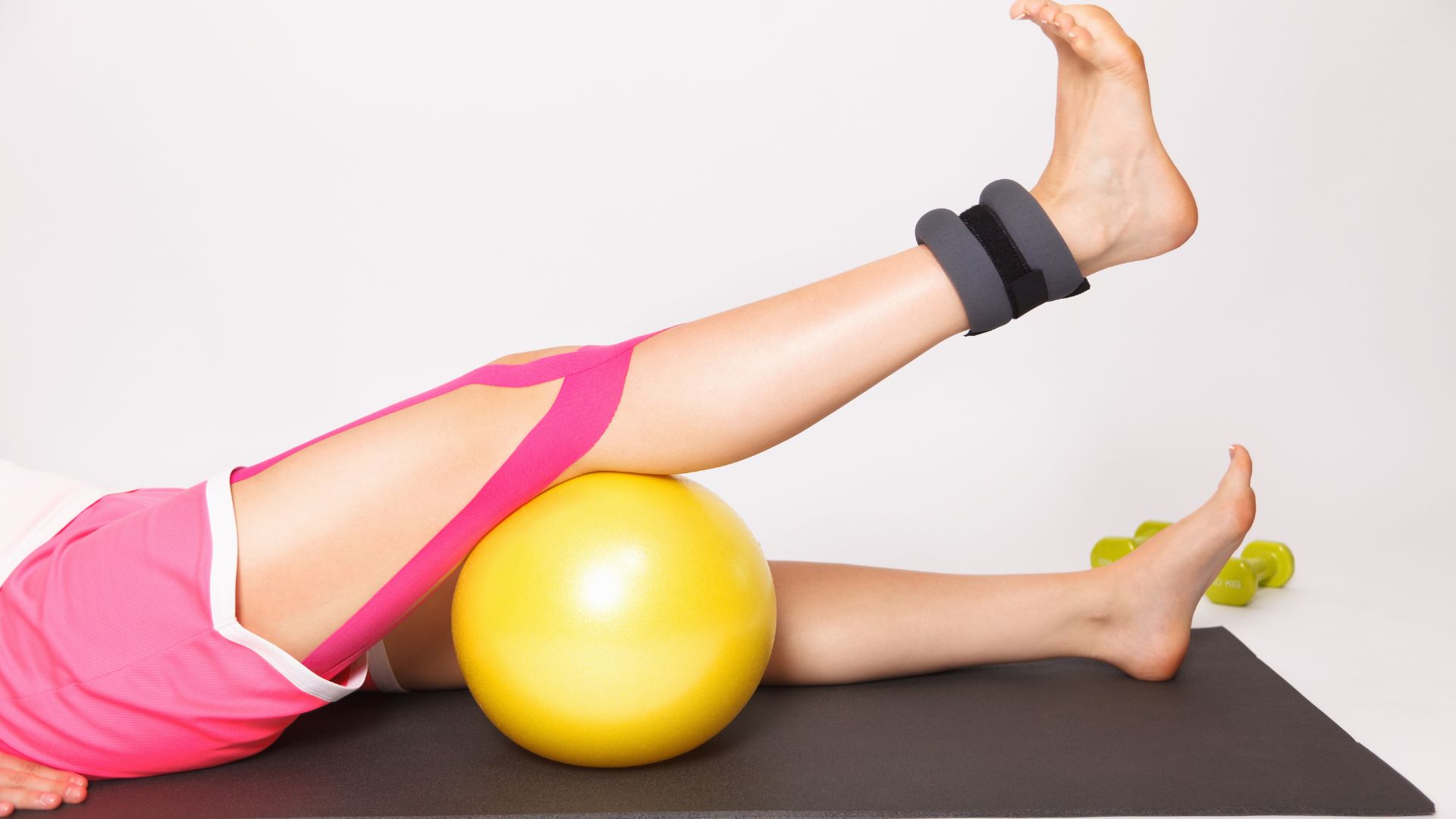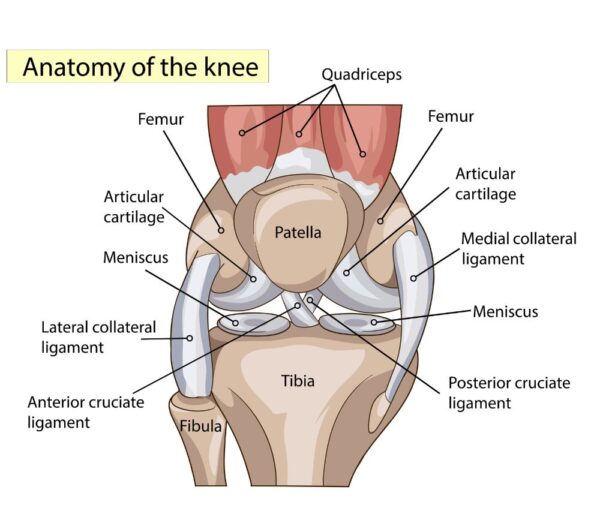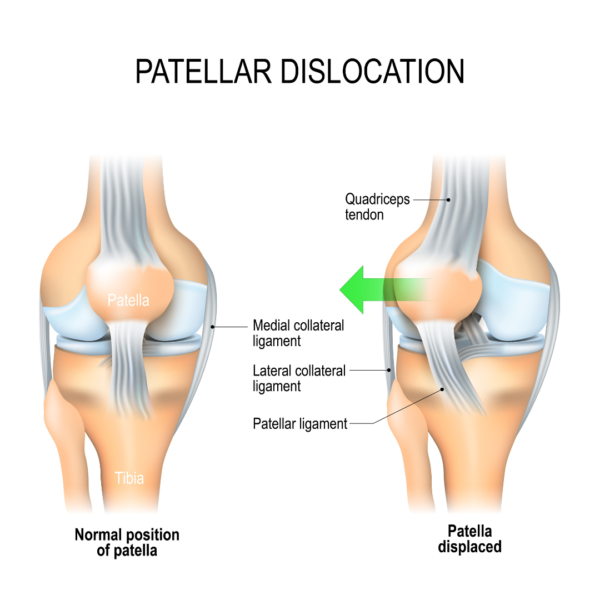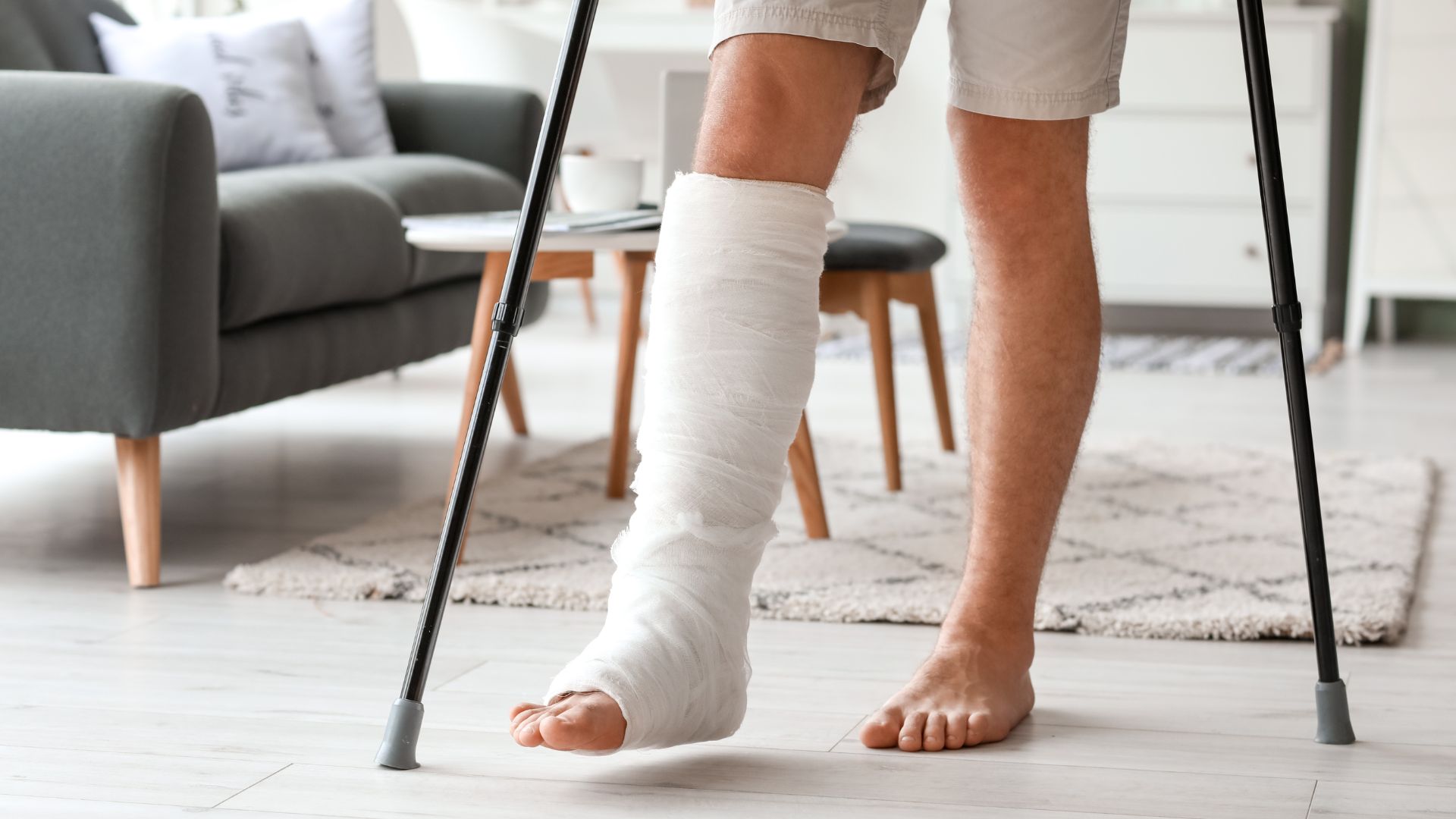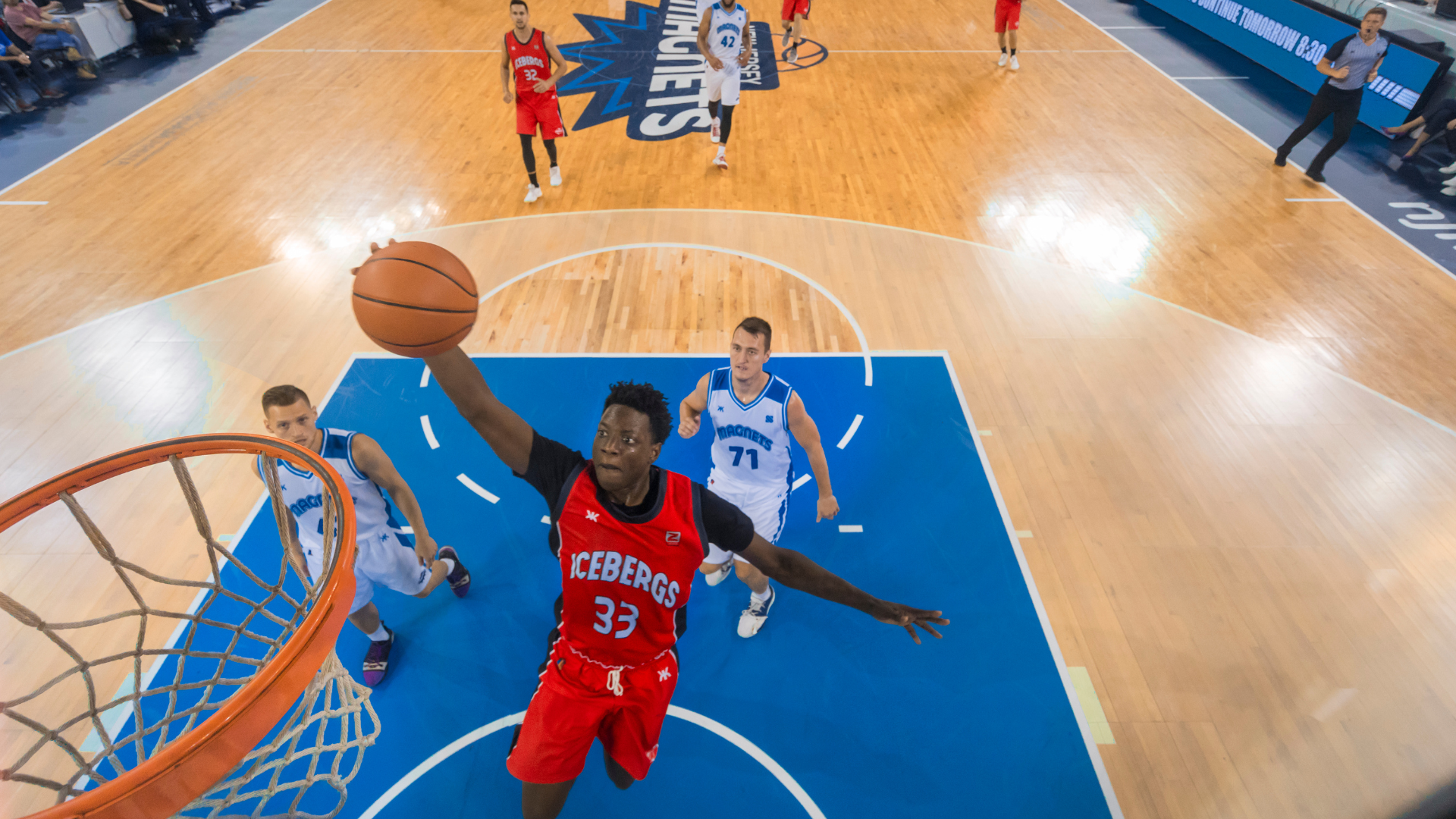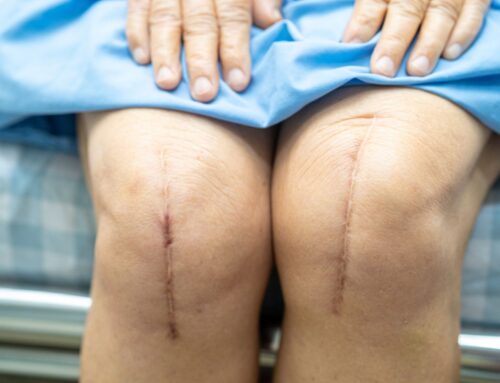Knee dislocation, also known as patellar dislocation, is an injury that can occur from a collision in sports, a fall, or a twisting motion of the knee while the foot is planted. Although these dislocations only account for approximately two to three percent of knee injuries, recurrence rates are high, ranging from 20 to 40 percent.[i]
Knee dislocations tend to affect young, active individuals. Fortunately, physiotherapy is an effective treatment for reducing symptoms and building strength to prevent these dislocations from occurring again. In this blog, we will look at the anatomy of the knee joint, how and why patellar dislocations occur, signs and symptoms as well as knee dislocation treatment, including physiotherapy management.
Table of Contents:
- Anatomy of the knee joint
- Knee dislocation causes
- Common knee dislocation symptoms
- Patella dislocation surgery
- Knee dislocation physiotherapy management
- Prevention of reoccurring patellar dislocations
Anatomy of the Knee Joint
The knee joint is important for many daily activities such as walking, standing up, running, squatting, and many other sports and activities. The knee joint is made up of 3 important bones:
- The femur: this bone makes up your thigh
- The tibia: this is the main bone of your shin
- The patella: also known as your kneecap
The knee is also made up of many ligaments. These ligaments help to hold bones together, including the patella:
- Anterior cruciate ligament
- Posterior cruciate ligament
- Lateral collateral ligament
- Medial collateral ligament
- Lateral patellofemoral ligament
- Medial patellofemoral ligament
- Patellar ligament (extension of quadriceps muscle)
The main movements of the knee joint are flexion (bending) and extension (straightening). During these movements, the patella moves up and down in a groove on the end of the femur. There are ligaments (mentioned above) and other structures surrounding the patella to ensure that it stays in an optimal position.
Knee Dislocation Causes
A knee dislocation is often caused by a non-contact injury, for example, twisting the knee or leg, rotation of the knee or mis-stepping. This twisting force causes the patella to move sideways, or dislocate, out of its groove in the femur. This dislocation can cause the muscles, ligaments and surrounding structures, including the medial patellofemoral ligament, to be stretched or torn.
Knee dislocations tend to occur in the lateral (sideways) direction because the quadriceps muscle on the front of the thigh pulls at a slightly lateral angle when it contracts. Patellar dislocations are also more likely in individuals with a greater Quadriceps-angle (Q angle).
The Q angle is the angle formed between the quadriceps muscles and the patellar tendon. It is considered a clinically important parameter in how the patella (knee) moves and is believed to contribute to injury risk, particularly in women.[ii] This is because Q angles tend to be higher in females (18 degrees compared to 14 degrees).[i]
Predisposing factors for a patellar dislocation include:
- Ligament laxity
- Muscular imbalance
- Patellar hypermobility (too much movement in the joint)
- Previous patellar dislocation
- Patella that sits high (patella alta)
- Increased Q angle
Patellar dislocations can also be causes by a direct blow to the knee, falls, and car accidents.
Common Knee Dislocation Symptoms
Symptoms of p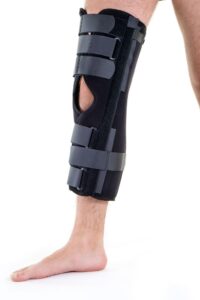 atellar dislocations can include pain, swelling, bruising, feeling of instability of the knee and locking of the knee. After a knee dislocation occurs, imaging such as an X-ray, to rule out a fracture, and an MRI, to determine the degree of tear to the ligaments, are commonly performed.
atellar dislocations can include pain, swelling, bruising, feeling of instability of the knee and locking of the knee. After a knee dislocation occurs, imaging such as an X-ray, to rule out a fracture, and an MRI, to determine the degree of tear to the ligaments, are commonly performed.
A Zimmer splint (pictured left) that immobilizes the knee joint, may be prescribed to stabilize the knee and allow the involved structures to heal properly.
Patella Dislocation Surgery
There are circumstances that would indicate the need for surgical management of a patellar dislocation. Conservative management (i.e., physiotherapy) may not be recommended if there are multiple ligaments injured or torn, if there is a high degree of the tear, or if the patella is highly unstable.
Additionally, if the cause of the dislocation was blunt trauma to the knee itself, a fracture may be present, and this can sometimes warrant surgery. Some of the types of patella dislocation surgery may include:
- Medial patellofemoral ligament repair or reconstruction
- Surgical release of ligaments on the lateral side of the knee
- Tibial tubercle re-alignment or transfer – the tibial tubercle is moved toward the center and held in place by two screws to prevent the patella from sliding out of place.[iii]
Knee Dislocation Treatment
Physiotherapy is an important component in knee dislocation treatment and for the prevention of future dislocations. Treatment often begins with immobilization of the knee joint using a splint. Some exercises may still be performed during this acute stage as the splint is removable.
Your physiotherapist will start the initial assessment by asking some key questions, including:
- How did the dislocation happen?
- What were your symptoms immediately following the injury?
- What are your current symptoms?
- Has any imaging been done?
- How are your pain levels?
During this first visit, your physiotherapist will also assess your knee by looking at range of motion, strength, swelling, bruising, weight bearing, and how your patella is moving.
Your knee dislocation treatment plan will include increasing your range of motion at the knee both passively and actively. Strength training will also be an important component of your treatment. Strengthening the structures that support the knee will be a key component of your recovery. These include strengthening of the front thigh muscles (quadriceps), inside thigh muscles (adductors) and hip muscles (abductors) and the back thigh muscles (hamstrings).
Pain management will also be integral part of therapy in the initial stages after a patellar dislocation. This may include modalities such as icing, ultrasound, acupuncture and taping. Physiotherapists will also provide education on movement and activity restrictions.
Another key focus of physiotherapy treatment is returning to daily activities, as well as eventually returning to sport-specific activities. This will require practice with walking, crouching, jumping, standing up from a chair, and any other activities you want to get back to.
Prevention of Reoccurring Knee Dislocations
Full recovery from knee dislocations is common, although there is a chance for future dislocations to occur.[iv] Physiotherapy can help to strengthen the muscles pulling on the patella, such as the quadriceps. By progressively loading the ligaments of the knee and incorporating sport-specific activities gradually, we can decrease the chance of another dislocation.
A physiotherapist will also help to determine if a knee brace is appropriate in the short and long term to prevent further dislocations.
Physiotherapists play a key role in knee dislocation treatment and prevention. Our therapists can help devise a customized treatment plan to help you meet your goals and needs. Don’t let knee pain or instability stop you from doing what you love.
References
[i] Hayat Z, El Bitar Y, Case JL. Patella Dislocation. [Updated 2023 Jul 4]. In: StatPearls [Internet]. Treasure Island (FL): StatPearls Publishing; 2023 Jan-.
[ii] Khasawneh RR, Allouh MZ, Abu-El-Rub E. Measurement of the quadriceps (Q) angle with respect to various body parameters in young Arab population. PLoS One. 2019 Jun 13;14(6):e0218387. doi: 10.1371/journal.pone.0218387. PMID: 31194851; PMCID: PMC6564690.
[iii] Respizzi S, Cavallin R. First patellar dislocation: from conservative treatment to return to sport. Joints. 2014 Aug 1;2(3):141-5. doi: 10.11138/jts/2014.2.3.141. PMID: 25606558; PMCID: PMC4295683
[iv] Toby O. Smith, Leigh Davies, Rachel Chester, Allan Clark, Simon T. Donell, Clinical outcomes of rehabilitation for patients following lateral patellar dislocation: a systematic review, Physiotherapy, Volume 96, Issue 4, 2010, Pages 269-281, ISSN 0031-9406
Written by

